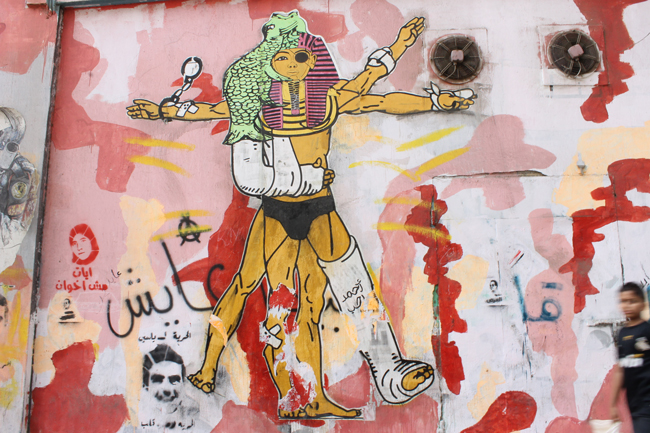The Social Life of Urban Images: A study of revolutionary street art in Egypt
By Sarah Awad
Sociocultural psychology theoretical framework is used to look at how images are used as tools of action and how they form symbols in the urban environment. The focus will be on four key psychological and political uses of images: creating visibility, mobilizing, positioning, and commemorating. First, images are communicative tools that make visible an object, a subject, or an idea, this potential to represent and create visibility gives images the capacity to produce spaces that embody the group who made them. Second, images can shape emotions and in so doing motivate action; through them we enter into a common stream of feelings that mobilize us towards a common cause. Third, images are condensed symbols that make arguments vis-à-vis other alternative positions within society; as such they position actors as upholding or violating rights and duties. Fourth, images simplify events into symbolic icons that become resources for the community’s collective memory and their affective reconstructions of the past.
The methodological approach builds on the idea of following the social life of certain images as they are transformed by different social actors through time in a certain public space. The empirical data draws on the case of revolution street art in Egypt since 2011. The street art of the Egyptian uprising provides an illustrative example of the political dynamics of images and the power struggle over presence and visibility. The revolution street art was one of the tools used by protestors to proclaim city space and represent the revolution narrative. The authority on the other hand, actively erased those revolution urban images and produced other visuals in the form of posters, billboards, and monuments to represent the official post- revolution narrative. The data is focused on the five years since the 2011 uprising and the context of Cairo’s city space as a field for this visual dialogue. Data includes visual documentation, qualitative interviews with revolution street artists and pedestrians, and official news and social media stories relating to the circulation of certain images.

